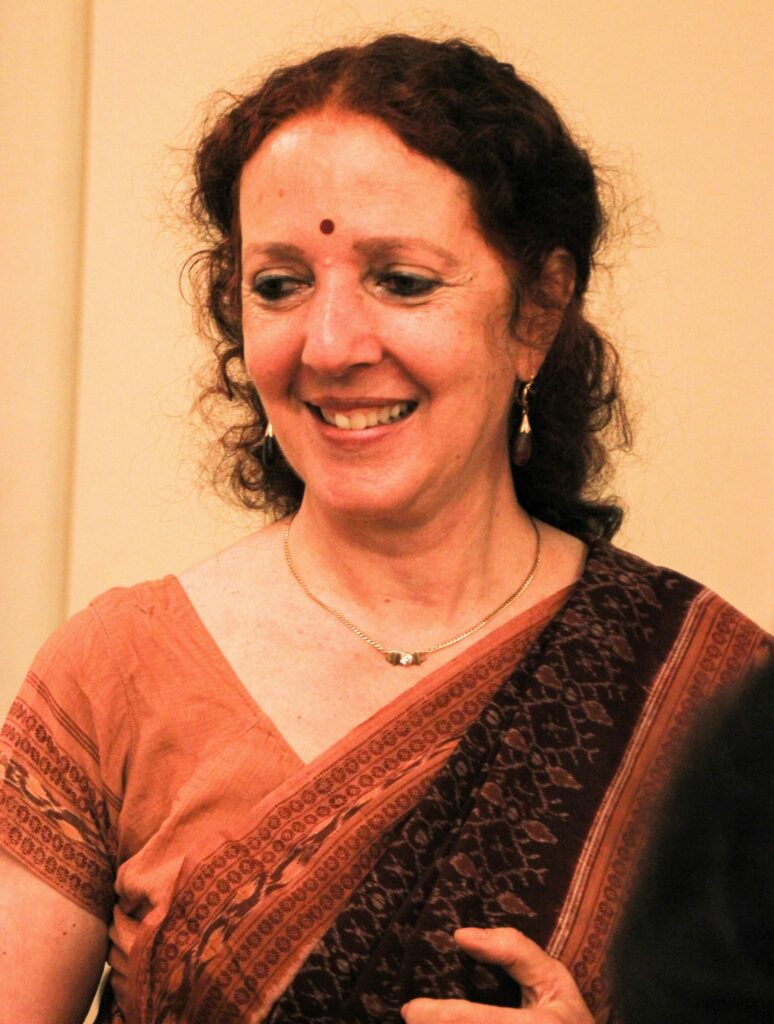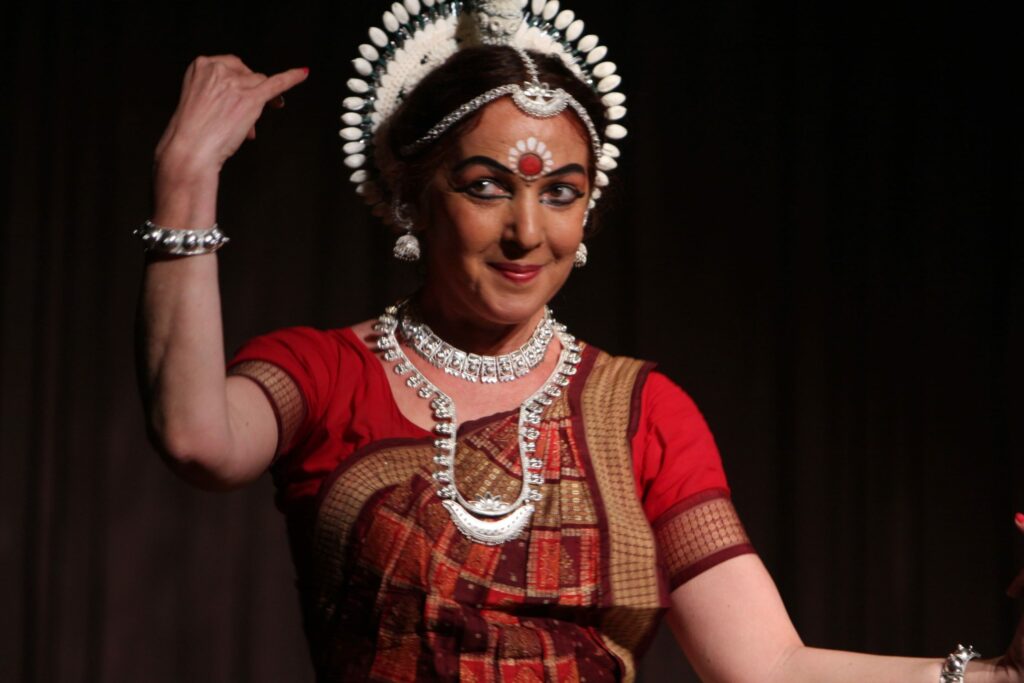To Odisha, with Love
In conversation with Odissi exponent, Ileana Citaristi in the backdrop of the launch of her new book ODISSI AND THE Gita Govinda.

/
Why the Geeta Govinda? What is your relationship with this text?
Jayadeva’s Geeta Govinda poem was one of the first things which fascinated me when I started to learn Odissi in 1979; at first as a romantic story and then as an allegorical, philosophical, sensual, spiritual work; all rolled into one. Moreover I had the good fortune to learn the exquisite dance choreographies of the Ashtapadi directly from my mentor and guru Kelucharan Mohapatra, whose renditions of the same have become legendary.
Is the Geeta Govinda a text that you engage with all your life, and in a sense, allow your relationship with it to mature even as you bloom as an artiste?
It certainly continues to fascinate and to amaze me for the variety of angles from which one can approach its content! One could even just study it from a botanical point of view for the wide range of trees, plants, creepers and flowers depicted! It is an endless source of inspiration. As far as my rendition of it through dance is concerned, the more I study it and learn its different aspects, the more I enjoy performing it.
From a dancer-choreographer’s point of view, is the Geeta Govinda a work in progress? Do you keep going back to the text, because of the philosophical content of the text, and how it appeals to you?
My philosophical background with a special focus on mythological symbols and their different layers of interpretation, which was the subject of my PhD thesis, is of course predominant in my approach to the text. But equally appealing for me is the romantic aspect of the story and the dreamy quality which surrounds the entire poem which fascinates me and fuels my imagination.
What is the focus/premise of the book and how long did you work on it?
As I have mentioned in the Preface of the book, the book is mainly a work of love towards Odisha and its rich culture. When I started writing this book which was to centre around the topic of the Geeta Govinda poem and its relation to Odissi dance I realised that I had to start from the roots. I had to start by introducing history, royal dynasties, rituals of the temple, life of the Devadasi, creeds and beliefs of the Vaishnava dharma, anecdotes about Jayadeva’s life, evolution of the performing arts in Odisha to reach to the core of the subject, that is the transformation of the written poem into a visual and performative one.
I wrote the book during the first year of lockdown and in fact this is what helped me to go through it. My days were spent surrounded by all those books which I had almost forgotten to possess although they had been already underlined by me in the past. I realised that in the first years after coming to India in the early 80s my academic background was still a strong factor and the reading of all these books on religion, philosophy and history provided me with a strong understanding about the dance and the culture I was going to learn. Then with the passing of years the practical aspect took the upper hand; training, performances, rehearsals, choreographies, teaching sessions and so on filled up my entire days and the reading practice started fading away. It was during the lockdown period that all this surfaced again. My last book, my autobiography, had been entirely written during my travelling, either by road, train or air whereas this one has been written completely in confinement!


Is it only for dancers of the Odissi form or would you think it cuts through barriers of genre, et al?
It is certainly related to the culture of Odisha and to the interconnection among all its different streams such as literature, sculpture, poetry, painting, music, dance and history and how the culture is still reflected in the daily life and beliefs of the people. But it could be relevant to whomever is interested in knowing the history and the process of transformation our art forms went through along the centuries.
Over the years, many scholars have written on the Geeta Govinda; what is the unique perspective that you bring to it and therefore is it also a personal take on the text?
Mine is mostly an historical book which may help the students of the present form of Odissi dance in understanding the foundations of what they practice. The book traces an overview of the different components which define the cultural landscape of the state of Odisha in relation to its history, religious cults, art and literature and links the development of the various aspects to the role played along the centuries by the Geeta Govinda poem in its different manifestations. From being an important component of the rituals performed in the Jagannath Temple to becoming an essential part of the people’s daily life and artistic expressions, this immortal poem has exercised its influence on the cultural scenario of the state from its early inception in the 12th century until the present times.
After the first chapter which deals with the history and myths related to the Jagannath temple, the second is dedicated to the description of the poem, its structure and content, while the third is an exposition of the cultural activity exercised by the temple dancers in relation to the different rituals celebrated in the temple. The four chapter deals with the historical development of the performative scenario in Odisha in the last century and the fifth chapter is dedicated to the analysis of some of the present dance compositions based on the Geeta Govinda poems as interpreted and visualised through the art of abhinaya in the revived present form of Odissi dance. The sixth chapter is dedicated to the music of the Geeta Govinda in relation to the traditional raga mentioned in the original manuscript by the poet and to the musical rendition in the particular style known as Odissi paddhati.
I hope the exposure to this enlarged context and historical background provides the present day Odissi dancers and practitioners a deeper understanding of the dance form and offers them new perspectives and incentives in the rendition of the content of this immortal poem.
On Our Bookshelf
Dancing in the Family by Sukanya Raman

Indian classical dancer and visual artist, Sukanya Raman’s Dancing in the Family is an important document on “three generations of women who profoundly impacted the revitalization of classical dance–especially Bharatanatyam and Odissi–in India and abroad. This intimate memoir begins with Esther Luella, who in the Orientalist frenzy of 1920s America became increasingly immersed in Indian dance and changed her name to “Ragini Devi”, then eloped tumultuously to India. Here her stubborn pursuit of what she felt she had been reincarnated for resulted in an acclaimed career as a Bharatanatyam and Kathakali dancer. Yet a gypsy fortune-teller had predicted that her daughter’s fame would eclipse her own, and indeed it was Indrani Rahman–rebellious, talented, beautiful, defying her mother by marrying aged fifteen–who truly brought Indian classical dance to the world stage; a pioneer who introduced Odissi, until then performed only by the marginalized Devadasi community, to widespread appreciation. Sukanya Rahman, granddaughter to Ragini and daughter to Indrani, explores the truths behind their celebrated lives against the history of the dances they popularised in pre- and post-Independence India. She delves into her own life with the same unassuming candour, reflecting upon her simultaneous desire and inability to draw away from this potent inheritance of dance.
Ultimately an ode to these remarkable women so significant to Indian dance, this intergenerational memoir is recounted with a frank authenticity which makes for a compelling read. More than 50 archival family photographs, dating from 1893, contribute to making this book a gem in the history of Indian dance”.









